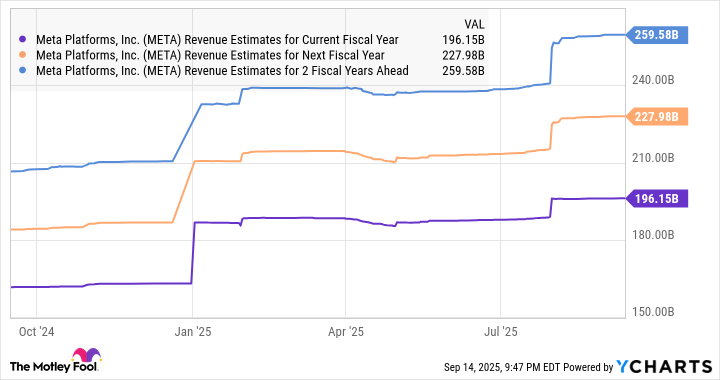There are now four companies in the world that are worth more than $3 trillion (Alphabet joined this list this week), and the fast-growing adoption of artificial intelligence (AI) technology has played a key role in helping all four exceed this benchmark.
Nvidia, the world's largest company, dominates the AI chip market. Meanwhile, Microsoft's tremendous revenue backlog created by the booming demand for its AI cloud and productivity services is one of the reasons why it is the second-biggest company in the world. Apple, the other name on the $3 trillion-plus market cap list, is also looking to capitalize on the proliferation of AI to supercharge its growth. Alphabet, like Microsoft, is a cloud computing player and digital advertising leader.
However, there is another big tech company that's winning big from AI adoption within its industry and could witness outstanding growth. Let's take a closer look at that name and check why it has the potential to enter the $3 trillion market cap club ahead of peers, including Amazon.

Image source: Getty Images.
Digital advertising dominance is set to give this tech giant a major boost
Meta Platforms (META -1.19%) is the sixth-largest company in the world with a market cap of $1.9 trillion. It is known for its family of social media applications, including Instagram, Facebook, Threads, and WhatsApp, which have billions of users. This puts Meta in a terrific position to capitalize on the massive digital advertising market.
Grand View Research estimates that the digital ad market could generate $1.1 trillion in revenue in 2030. That would be a huge improvement over last year's revenue of $488 billion. Meta is taking advantage of AI to ensure that it can corner a nice chunk of this massive addressable opportunity on offer. It is using AI to drive stronger engagement across its apps, apart from giving advertisers access to AI tools so that they can improve audience targeting and create ad campaigns easily.
For instance, smaller advertisers can use Meta's generative AI creative tools to create and optimize ad campaigns for Facebook and Instagram, eliminating the need to hire a separate agency. Meanwhile, the AI-recommended content that's driving an increase in time spent on both Facebook and Instagram is another positive for advertisers since they have a chance to capture more eyeballs.
Additionally, Meta's AI advertising tools use real-time data from campaigns so that they can be optimized for better performance, helping advertisers reach a wider audience at lower costs. As mentioned in a company blog post citing a recent study conducted by Meta management: "This study also assessed the impact of our new AI-driven advertising tools and found that they drive a 22% improvement in return on ad spend for advertisers. This means that for every dollar U.S. advertisers spend with Meta, they see a $4.52 return when they use our new AI-driven advertising tools."
As such, it is easy to see why Meta is growing at a much faster pace than the digital ad market. Its second-quarter revenue increased 22% year over year to $47.5 billion. For comparison, the digital ad market is predicted to grow by almost 8% in 2025. Meta, therefore, seems to be capturing a bigger chunk of the lucrative digital advertising market. Not surprisingly, Meta expects massive growth in generative AI-fueled revenue, which will be enough to help it join the $3 trillion club.
Meta Platforms projects a massive spike in its AI revenue
In June last year, Meta management estimated that its AI revenue in 2025 could hit at least $2 billion (according to unsealed court documents). By 2035, the company estimates this figure to land between $460 billion and $1.4 trillion. That forecast points toward massive growth considering that Meta is expected to end 2025 with $196 billion in revenue.
But even if Meta's AI revenue lands at the midpoint of its guidance range after a decade, the company would see a massive spike in its top line that could send its market cap way beyond the $3 trillion mark in the long run. Importantly, analysts also updated their growth expectations, and that's not surprising considering the points discussed above.
Data by YCharts.
But then, there is a good chance that the company will be able to outpace these expectations as it has the potential to keep growing at a faster pace than the 15% annual growth that the digital ad market is expected to clock. Assuming it can hit 20% revenue growth in 2026 and 2027, Meta's top line could jump to $282 billion after two years (using 2025's projected revenue of $196.1 billion as the base). If it maintains its price-to-sales ratio of 11 at that time, its market cap could go past $3 trillion.
However, Meta could get to that milestone at a quicker pace. The market may reward it with a higher premium on account of its growing dominance in digital advertising.






